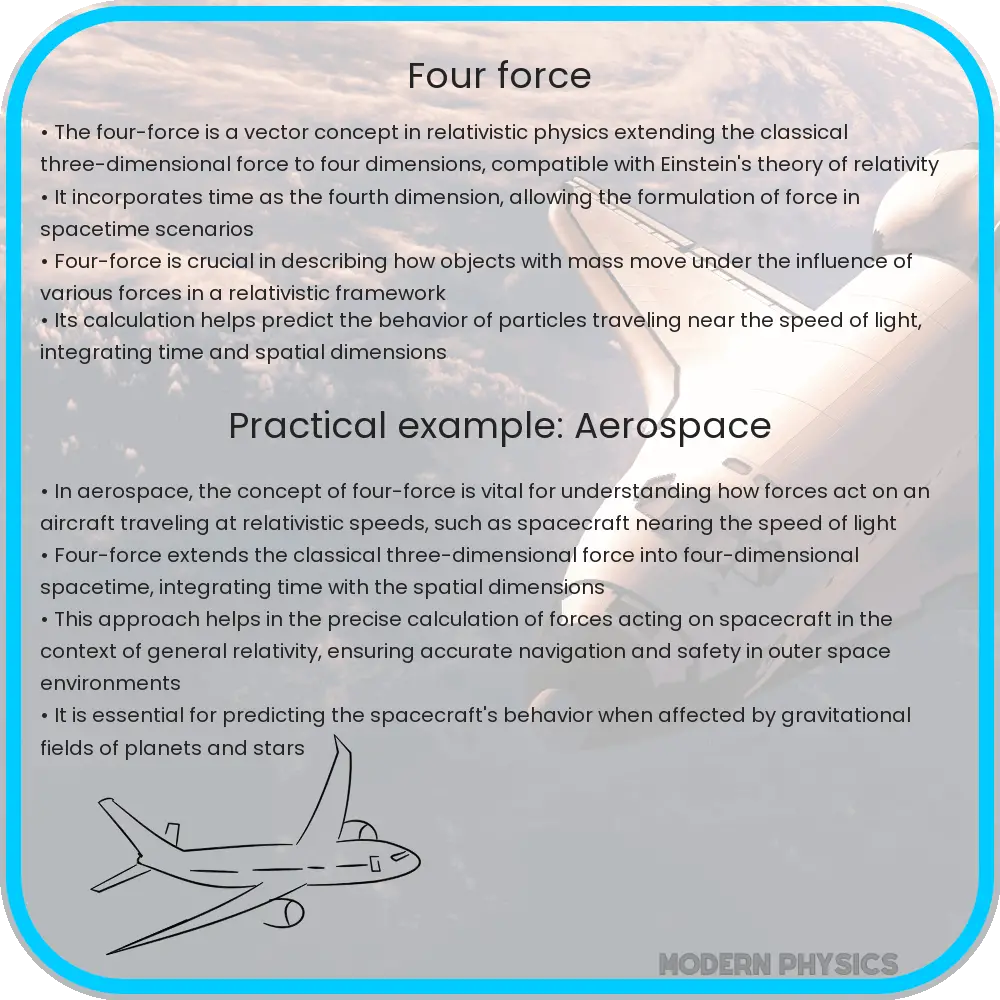These forces, known as the four fundamental forces of nature, are the gravitational force, electromagnetic force, strong nuclear force, and weak nuclear force.

Understanding the Four Fundamental Forces of Nature
The universe operates under a set of fundamental forces that govern the interactions of matter and energy. These forces, known as the four fundamental forces of nature, are the gravitational force, electromagnetic force, strong nuclear force, and weak nuclear force. Each force plays a crucial role in the cosmos, influencing everything from the orbit of planets to the stability of atoms.
Gravitational Force: The Binding Force of the Cosmos
The gravitational force is perhaps the most familiar of the four forces. It is the force that causes objects with mass to attract one another. Governed by Isaac Newton’s law of universal gravitation and later refined by Albert Einstein’s theory of general relativity, gravity is responsible for keeping planets in orbit around stars and galaxies bound together. Despite its universal presence, gravity is the weakest of the four forces.
Electromagnetic Force: The Power of Charge and Magnetism
The electromagnetic force, mediated by photons, is responsible for electric and magnetic interactions. It’s the force that operates in electric circuits and magnetic fields. On an atomic level, it governs the structure of atoms, holding electrons in orbit around the nucleus. Its range is infinite, but it is many times stronger than gravity. This force is responsible for most of the everyday phenomena we encounter, from light to the structure of solids.
Strong Nuclear Force: The Binder of Atomic Nuclei
The strong nuclear force is the most powerful of the four forces, but its range is limited to the atomic nucleus. It is responsible for holding protons and neutrons together in the nucleus of an atom. Without this force, atomic nuclei couldn’t exist, as the electromagnetic repulsion between positively charged protons would cause them to fly apart. The strong force is mediated by particles known as gluons.
Weak Nuclear Force: Responsible for Radioactive Decay
The weak nuclear force is responsible for processes like radioactive decay and nuclear fission. It plays a critical role in the nuclear reactions that power the sun and other stars. The weak force has a very short range and is weaker than both the strong force and electromagnetic force. It’s mediated by W and Z bosons and is essential for the process of nuclear fusion that powers the stars.
These fundamental forces are not just theoretical constructs but have practical applications in various fields. In the following sections, we will explore their applications and how they contribute to our understanding of the universe.
Applications of the Fundamental Forces
The four fundamental forces not only explain a wide range of natural phenomena but also have numerous practical applications. The gravitational force, for instance, is essential in astrophysics and cosmology, helping us understand the motion of celestial bodies and the expansion of the universe. It’s also crucial in technologies like GPS, which requires precise calculations of Earth’s gravitational field.
Electromagnetic forces are the cornerstone of modern technology. They are exploited in generating and transmitting electrical power, in communication systems via radio waves, and in medical equipment such as MRI machines. This force is also fundamental in the field of chemistry, as it determines the way atoms bond and interact.
The strong nuclear force, while limited in its range, has profound applications, most notably in nuclear power generation and nuclear weapons. This force is harnessed in nuclear reactors to produce energy through the process of nuclear fission. In medicine, techniques like Positron Emission Tomography (PET) scans rely on nuclear processes governed by the strong force.
The weak nuclear force, known for its role in radioactive decay, is pivotal in radiometric dating methods used in geology, archaeology, and paleontology. It also plays a crucial role in the life cycle of stars, including our sun, where it participates in nuclear fusion processes.
Analysis and Future Research Directions
Understanding these forces is not just about comprehending the universe’s workings; it’s also about pushing the boundaries of human knowledge and technology. The ongoing research in particle physics, especially in facilities like the Large Hadron Collider, aims to probe deeper into these forces. One of the major goals is to discover a unifying theory that can explain all four forces within a single framework, often referred to as the ‘Theory of Everything’. This pursuit could lead to revolutionary advancements in energy, materials science, and our understanding of the universe’s evolution.
Another exciting area of research is the study of dark matter and dark energy, which seem to interact only through gravity. Unraveling these mysteries could provide new insights into gravitational force and its role in the cosmos.
Conclusion
The four fundamental forces of nature – gravitational, electromagnetic, strong nuclear, and weak nuclear – are the building blocks of the universe. They govern everything from the movement of galaxies to the interactions of subatomic particles. Understanding these forces not only enriches our knowledge of the natural world but also drives innovation in technology and science. As research progresses, we may uncover new aspects of these forces, potentially leading to groundbreaking discoveries that could transform our understanding of the universe and our place within it.
Is this conversation helpful so far?
